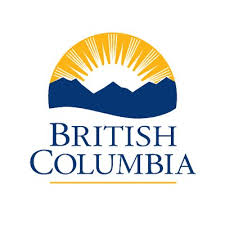
B.C. grows critical minerals sector, sustainable jobs
Phase 1 of a new made-in-B.C. Critical Mineral Strategy delivers key actions to build a clean economy by expanding the critical minerals sector in alignment with the standards of the UN Declaration on the Rights of Indigenous Peoples.
“The world needs a stable, free, democratic, high-standard producer of the metals and minerals needed to battle climate change. That gives B.C. a generational opportunity to seize, one where we can be prosperous and protect the planet for our kids at the same time,” said Premier David Eby.
“Resource workers like miners in our province are on the front lines of the fight against climate change. We’ll support them and their families, so they can support the whole province.”
Critical minerals, such as copper, nickel and molybdenum, are essential components in products used for clean energy like electric vehicles, solar panels, wind turbines, electrical transmission lines and batteries. B.C.’s mining sector provides many of the building blocks of clean technologies that the province and the world need to fight climate change and build a clean economy.
The first phase of the Critical Minerals Strategy launches 11 key actions, including:
- taking action to expedite critical minerals projects and maximize federal funding opportunities through a new Critical Minerals Project Advancement Office;
- a B.C. critical minerals atlas to provide world-class geoscience data that is always current, and to support exploration and land-use planning;
- alignment of Provincial and First Nations Energy and Mining Council critical minerals strategies, and continued engagement with First Nations across the province;
- B.C. to work in partnership with First Nations and industry to identify and advance critical-mineral infrastructure like the North Coast Transmission Line that is essential to critical-mineral development and growth, supported by a $36-billion BC Hydro capital plan; and
- taking action to ensure the highest environmental, social and governance (ESG) standards, a new Energy and Mines Digital Trust project that empowers major mining operators in B.C. to be more transparent about where and how their products are made.
“As the economy transitions to clean energy, B.C. and the world are going to need critical minerals to build electric vehicles, solar panels, wind turbines, and more,” said Josie Osborne, Minister of Energy Mines and Low Carbon Innovation. “With rich mineral deposits, B.C. has a generational opportunity to drive growth and create new jobs for people across the entire value chain of critical minerals, from mining to manufacturing to recycling.”
In addition to opening up opportunities to develop additional critical minerals in B.C., the strategy also focuses on new ways to add value to the sector by growing downstream opportunities, such as processing and manufacturing, as well as battery recycling, that will see mined materials put back into the supply chain.
Future actions to expand B.C.’s Critical Minerals Strategy are expected to be delivered in the coming months. Next steps include actions to support First Nations participation in projects, economic analysis and support for First Nations’ capacity building to develop and refine policies and actions. An important part of the work ahead will be ensuring that the strategy is aligned with the UN Declaration on the Rights of Indigenous Peoples.
During Premier Eby’s announcement at the Association of Mineral Explorers annual conference, he shared exploration expenditures and mine production numbers for 2023, reaffirming another strong year for B.C.’s mining and mineral exploration sector. Last year, mineral-exploration expenditure in the province was $643.5 million, 94.1% higher than in 2018, the first full year of this government’s mandate. Mining production value is forecast to be more than $15.9 billion for 2023, a 63.9% increase from 2018. Over the past several years, B.C. has also made significant progress on exploration-permitting timelines, including a 52% reduction in the backlog of permits.
Quick Facts:
- B.C.’s mining sector currently employs more than 35,000 workers in rural and urban communities.
- The sector also contributes $7.3 billion to provincial gross domestic product (GDP), produces 28% of export value and approximately $1 billion in provincial government revenue to support services.
- B.C. is rich with raw minerals, having 16 of the 31 identified critical minerals in the Canadian Critical Minerals Strategy.
- B.C. is Canada’s largest producer of copper and only producer of molybdenum, which are both critical minerals.
- B.C. mines have one of the lowest carbon footprints in the world.
- The Province established a critical minerals advisory committee to guide and inform the work of drafting a Critical Minerals Strategy.
- The committee was co-chaired by a representative of the First Nations Leadership Council and B.C., and is a diverse group with broad expertise on matters related to critical minerals and natural-resource stewardship.
Learn More:
For more information about the Critical Minerals Strategy, visit: https://www2.gov.bc.ca/gov/content?id=A925302861954932A6D4493A5576CCDF
To view the critical minerals brochure, visit: https://www2.gov.bc.ca/assets/download/EDBFF83D359647698BC9A6EAFCA912B9
MORE or "UNCATEGORIZED"
Great Pacific Gold Announces Closing of Upsized $16.9 Million Private Placement Financing Led by Canaccord Genuity Corp
Great Pacific Gold Corp. (TSX-V: GPAC) (OTCQX: FSXLF) (FSE: V3H)... READ MORE
Ridgeline Minerals Provides Assay Results and Drill Program Updates for the Big Blue and Atlas Projects
Big Blue highlights: 0.6 meters grading 0.7% Cu, 3,194 g/t Ag and... READ MORE
Goldshore Intersects 42.7m of 1.09 g/t Au at the Eastern QES Zone of the Moss Deposit
Goldshore Resources Inc. (TSX-V: GSHR) (OTCQB: GSHRF) (FSE: 8X00)... READ MORE
Dios Sells K2 to Azimut
Dios Exploration Inc. (TSX-V: DOS) is pleased to report it has e... READ MORE
Northisle Announces Near Surface Intercepts and Higher-Grade Intercepts at Depth at West Goodspeed on its North Island Project
Highlights: Recent drilling at West Goodspeed supports the presen... READ MORE













